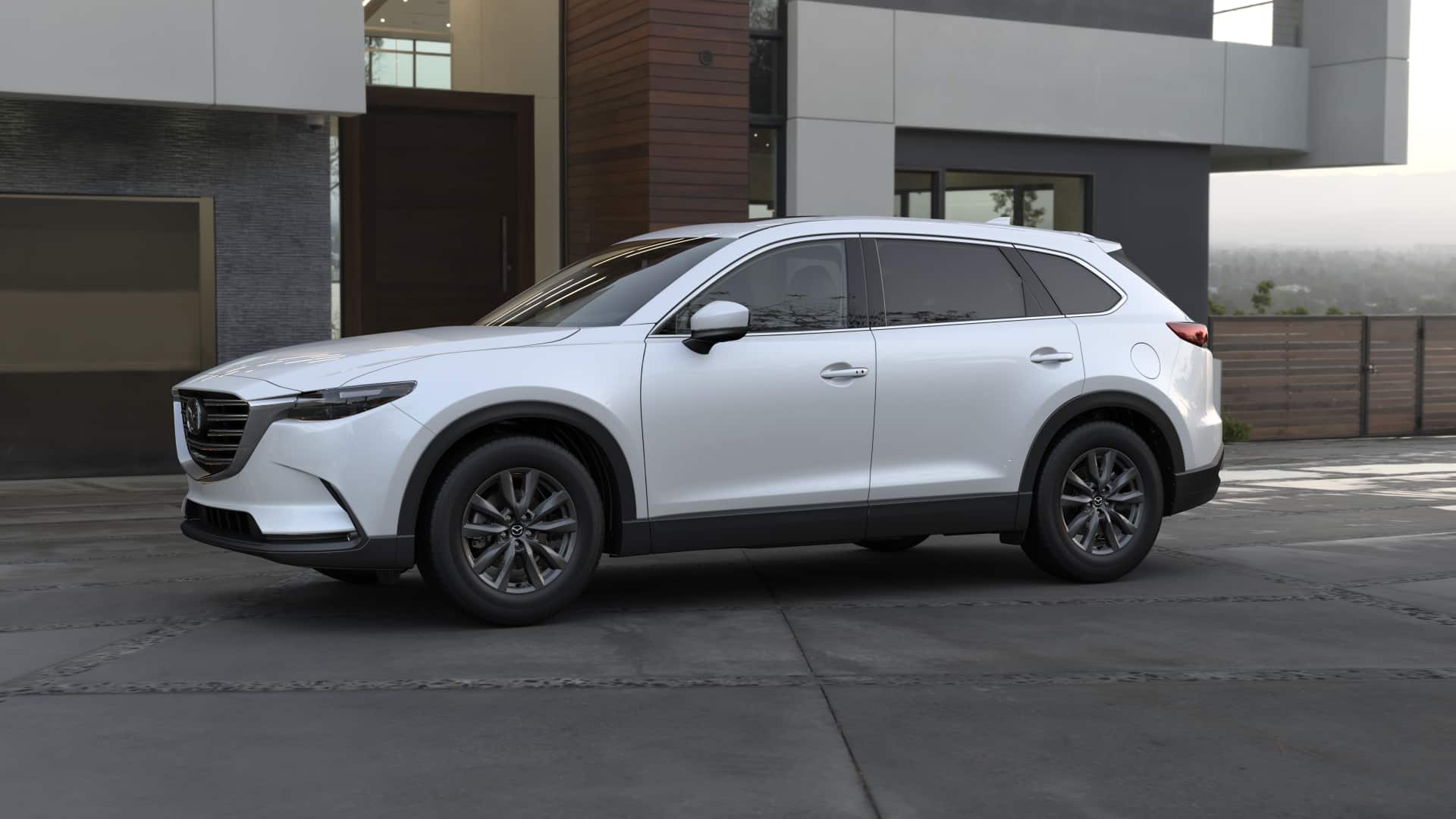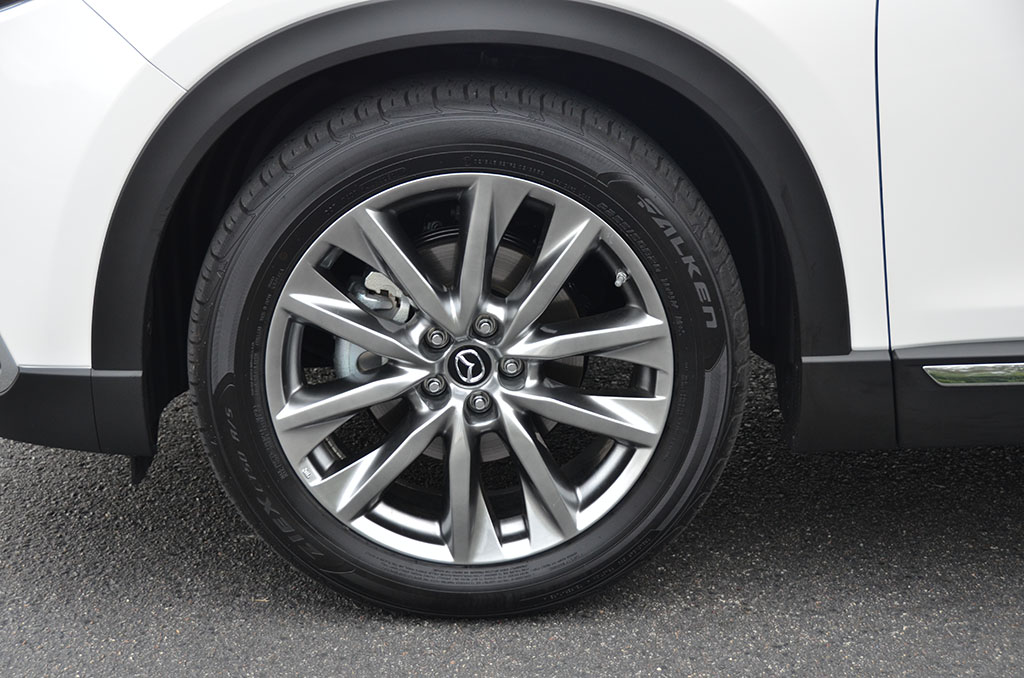If you’re like most people, you probably don’t think about your car’s tire pressure very often. But did you know that proper tire pressure is actually crucial to the performance and safety of your vehicle? That’s why we’re here to help! In this blog, we’ll tell you everything you need to know about tire pressure and why it matters.
This article will help you to keep your tires in top shape. So whether you’re a Mazda CX-9 owner or not, read on to learn more!
Contents
How to Check Mazda CX-9’s Tire Pressure?
Mazda CX-9s require tire pressure checks every month or so. You can check your Mazda’s tire pressure in one of two ways: with a physical tire gauge, or by using Mazda’s Tire Pressure Monitoring System (TPMS).
To check your Mazda CX-9’s tire pressure with a physical tire gauge:
- Park your Mazda on level ground and turn off the engine
- Locate the valve stem on each tire. The valve stem is the small metal piece on the side of the tire that you use to inflate or deflate the tire
- Unscrew the cap from the valve stem and place the tip of the tire gauge on the exposed end of the valve stem
- Push down on the tire gauge until you hear a hissing sound. This means that the gauge is properly attached to the valve stem
- Hold down on the tire gauge until it gives you a reading. This reading is your Mazda’s current tire pressure
- Repeat steps 3-5 for each remaining tire on your Mazda CX-9

To check your Mazda CX-9’s tire pressure using Mazda’s Tire Pressure Monitoring System (TPMS):
- Park your Mazda on level ground and turn off the engine
- Locate the TPMS button on your dashboard similar to. It will likely be located near your other vehicle controls, such as those for headlights and windshield wipers. It may also have an icon of a car with waves emanating from it, similar to. In some cases, you may need to consult your Mazda’s owner’s manual to find this button. In some cases, you may need to consult your Mazda’s owner’s manual to find this button
- Once you have located this button, press and hold it until you see one or more of your tires’ PSI levels displayed on your dashboard similar to. The specific location of this display may vary depending on which model year of Mazda CX-9 you own. owners’ manuals can provide more detailed guidance if needed
- If any of your tires are low on air PSI, refill them to their recommended levels using a standard air pump similar to. For most models of Mazdas, including all versions of their CX-9s, this number will be between 30 and 35 PSIsimilar tp. You can find this number either embossed onto this side wall near the top border or in your owner’s manual under “Tire Maintenance & Specifications.” Tire gauges similar to this photo can also help ensure that you are inflating your tires monthly correct PSI
- As soon as all four tires have been filled to this target PSI, press and hold this TPMS button again until this now that all four of your tires start their proper PSI levels, and it is safe to proceed with driving your CX
Check Mazda CX-9’s Tire Pressure Regularly
It’s important to check your Mazda CX-9’s tire pressure regularly, especially if you’ve been driving on rough roads. Low tire pressure can lead to a blowout, so it’s important to keep an eye on your tires and fill them up when needed. The best way to check your tire pressure is with a digital tire pressure gauge.
How to Properly Inflate Mazda CX-9’s Tires?
Mazda CX-9s require special care when it comes to inflating their tires. The proper tire pressure for a Mazda CX-9 is 32 PSI in the front and 29 PSI in the rear. Inflating your tires to these pressures will help ensure a comfortable ride and optimal fuel economy.
Why Proper Tire Pressure in Mazda Cx-9 Is Important?
It is important to regularly check the tire pressure in your Mazda CX-9 to ensure optimal performance and fuel efficiency. You can check the pressure in your tires using a tire pressure gauge. The gauge will tell you how much air is in each tire. If the pressure is too low, add more air to the tire. If the pressure is too high, let some air out of the tire.
Mazda CX-9 tires perforate best when they are properly pressurized. Tires that are not inflated to the proper air pressure create more heat as they roll, which can lead to premature tire wear. Improperly inflated tires also require more fuel to keep them rolling, which harms your vehicle’s fuel economy.
How to Properly Inflate Mazda CX-9’s Tires?
To ensure your Mazda CX-9 operates at peak efficiency, it is important to check and adjust your tire pressure regularly. Proper tire inflation not only improves your CX-9’s gas mileage but also helps extend the life of your tires.
To check the tire pressure in your Mazda CX-9, use a tire pressure gauge to measure the air pressure in all four tires. The correct air pressure for your Mazda CX-9’s tires can be found in the owner’s manual or on a sticker located on the driver’s side door jamb.
Once you know the proper air pressure for your CX-9’s tires, use an air compressor or hand Pump to add air to any tires that are low. Be sure not to overinflate your tires – too much air pressure can cause them to burst.
Benefits of Proper Tire Pressure in Mazda CX-9
Your Mazda CX-9 tires are an important part of your vehicle. Proper tire pressure helps your tires last longer, helps your Mazda CX-9 handle better, and can improve your gas mileage.
- Under-inflated tires can overheat and fail, even when you’re not driving fast. If you drive on under-inflated tires, you’re also more likely to get a flat tire. Over-inflated tires can burst and cause an accident
- It’s important to check your tire pressure at least once a month, and before long trips. You can check your tire pressure with a gauge at a gas station or car wash, or with a digital tire pressure gauge
- Mazda CX-9s have different tire pressures depending on the model year and the trim level. The proper pressure for your Mazda CX-9 is listed on the placard on the driver’s side door pillar, or in the owner’s manual

Importance of Proper Tire Pressure in Mazda CX-9
It is important to maintain the proper tire pressure in your Mazda CX-9 for a number of reasons. Proper tire pressure helps to improve fuel economy, extends the life of your tires, and provides a smoother ride.
- Fuel economy is improved because under-inflated tires create more rolling resistance, which decreases gas mileage. In addition, under-inflated tires are more likely to overheat, which can lead to a blowout. Overinflated tires can also decrease fuel economy and handling, and may cause the tire to wear out prematurely
- Extending the life of your tires is another advantage of maintaining proper tire pressure. Under-inflated tires will wear out more quickly because they flex more as they roll. This flexing produces heat, which breaks down the tire structure and causes premature deterioration. In addition, overinflated tires will wear in the middle rather than evenly across the tread, resulting in premature replacement
- Proper tire pressure provides a smoother ride. This is because the cushion of air between the tire and the ground absorbs shock better than an under-inflated or over-inflated tire. As a result, you and your passengers will enjoy a more comfortable ride when your tires are properly inflated
Conclusion
In this article, we discussed the importance of proper tire pressure in the Mazda CX-9. We explained how you can properly inflate tires in your car. We explained how you can check the tire pressure in your car. Consider reading the complete article to know everything about proper tire pressure.
FAQs
Q. Does Mazda CX-9 Have Tire Pressure Display?
A. Tire pressure monitoring systems (TPMS) monitor pressure for each tire.

